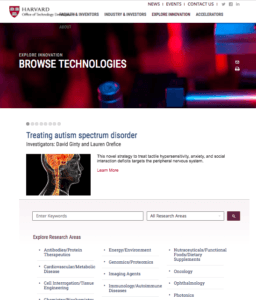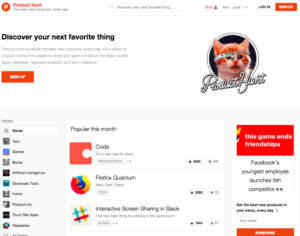Harvard’s Role in Boosting the Innovation Supply Chain

Harvard plays an important role in boosting the innovation supply chain
“Research universities are one of the strongest assets America can use to compete in the age of innovation” [1]
Gatorade and Google
The recipe for Gatorade was famously developed at the University of Florida by a team of scientists in 1965 after receiving a request from the football coach to help optimize player performance. By 2015, royalties earned from the sales of Gatorade surpassed $1 billion and the University of Florida had collected $281 million in royalties for its ownership stake [2]. In 2004, Stanford made roughly $336 million on the sale of Google stock that it had received in exchange for allowing two Ph.D. students, Sergey Brin and Larry Page, to license the search algorithm patent that the university-owned [3]. These are just two examples of university-developed intellectual property (IP) that have generated and continue to generate huge returns on investment for their universities and have added significant value to the world. Largely due to their ability to attract world-class talent, top-tier universities like Harvard are uniquely positioned to develop and help commercialize innovative technologies that positively impact the lives of people all over the world. As the current process stands though, the vast majority of intellectual property developed at Harvard will never achieve the success of Gatorade or Google. Having said that, the integration of software-based solutions into Harvard’s innovation supply chain could increase the probability of realizing the full value of its intellectual property.
What is Tech Transfer?
The Bayh-Dole Act of 1980 gave universities the right to own and license intellectual property [4]. Since then, many universities have established Technology Transfer Offices (TTOs), referred to as the Office of Technology Development (OTD) at Harvard, to assist laboratory researchers and inventors in bringing their technologies to market by helping to form new companies or by finding existing companies to license. Unsurprisingly, Harvard ranks as one of the “Most Innovative Universities” according to Thomson Reuters 2017 list, behind only Stanford and MIT [5]. However, according to a recent report from the Milken Institute, which ranked the effectiveness of university tech transfer offices, Harvard’s ranked number 27th [6]. Why the huge disparity?
Harvard’s Current Tech Transfer Process
As the process currently stands, when novel technology is developed by a researcher at Harvard, the researcher reports the innovation to Harvard’s Office of Technology Development (OTD), which evaluates the technology’s market potential. If the technology is deemed high potential, the OTD protects the technology by filing for a patent, then markets the intellectual property to potential licensing partners [7]. If a partner is found, a licensing contract is negotiated and, in most cases, any further commercial development is handled by the acquiring company. Due to the volume of technology development, this relatively cumbersome process creates a bottleneck at the OTD. To relate back to traditional supply chains, the university laboratory could be viewed as the manufacturer, the OTD is the distributor, and the existing company or new startup is the consumer. Marketing intellectual property is generally accomplished through existing relationships and word-of-mouth. This “innovation supply chain” is missing a digital retailer that can alleviate the marketing responsibilities and more effectively find licensing partners.
Figure 1. The “Innovation Supply Chain”
To address this concern in the short term and medium term, Harvard’s OTD currently lists available IP on its website [9]. The way in which it is listed, however, is relatively unorganized and difficult to contextualize. For example, interested companies and entrepreneurs have no way of filtering for important attributes of the technology beyond high-level industries. For starters, it would be helpful to understand the technology’s stage of development, potential applications of the technology, and preferred licensing terms.
Figure 2. Screenshot of Harvard’s Office of Technology Development Website [8]
Improving the Tech Transfer Supply Chain
Marketing high potential IP should not rely on serendipitous relationships of university faculty. There should be an easy systematized method for identifying high-potential technologies early on, engaging potential partners and receiving feedback, and ultimately striking a mutually beneficial licensing agreement with an existing company or new startup. Harvard should consider building a software platform that facilitates collaboration between inventors, existing companies, and other universities. The platform should help identify the most popular intellectually property, similar to a Product Hunt, where the most popular tech is up-voted to the top and should include potential applications for the technologies and help to facilitate licensing agreements.
Figure 3. Screenshot of Product Hunt’s website [9]
By building this platform, Harvard can increase the number of technologies brought to market and likely maximize its return on investment.
Open Questions
Finding licensees only solves part of the problem. In most cases, startups that acquire intellectual property will need funding to continue its development. Should the university also consider investing companies formed on its new software platform? Are there any risks in collaborating with other universities?
(Word Count: 778)
References:
- Concept to Commercialization: The Best Universities for Technology Transfer (pg 33) [1]: http://assets1c.milkeninstitute.org/assets/Publication/ResearchReport/PDF/Concept2Commercialization-MR19-WEB.pdf
- Royalties for Gatorade Trust surpass $1 billion: ‘Can’t let it spoil us’ [2]: http://www.espn.com/college-football/story/_/id/13789009/royalties-gatorade-inventors-surpass-1-billion
- Stanford expert on tech transfer tells Google’s story at BU conference [3]: https://www.bu.edu/today/2005/stanford-expert-on-tech-transfer-tells-google%E2%80%99s-story-at-bu-conference/
- Concept to Commercialization: The Best Universities for Technology Transfer (pg 8) [4]: http://assets1c.milkeninstitute.org/assets/Publication/ResearchReport/PDF/Concept2Commercialization-MR19-WEB.pdf
- Reuters Top 100: The World’s Most Innovative Universities – 2017 [5]: http://www.reuters.com/article/us-amers-reuters-ranking-innovative-univ/reuters-top-100-the-worlds-most-innovative-universities-2017-idUSKCN1C209R
- Concept to Commercialization: The Best Universities for Technology Transfer (pg 35) [6]: http://assets1c.milkeninstitute.org/assets/Publication/ResearchReport/PDF/Concept2Commercialization-MR19-WEB.pdf
- The Inventor’s Handbook (pg 17) [7]: http://otd.harvard.edu/upload/files/2016_Inventors_Handbook_lowres.pdf
- Harvard’s Office of Technology Development Website [8]: http://otd.harvard.edu/explore-innovation/technologies/
- Product Hunt website [9]: https://www.producthunt.com/






Hi Dave, thank you for the interesting post. I like the suggestion to think of innovation as a supply chain because the thought illuminates how complicated and disjointed the process of innovation often is in practice.
I am skeptical of the plan to improve Harvard’s OTD through converting their website into a Product Hunt-like interactive website. I think most people hunting for IP are unwilling to search on any university’s website because of the massive number of universities that hold IP. I would rather just use google.com/patents or some other database even if they’re unwieldy. In my opinion, the opportunity for improving the supply chain of innovation would be to aggregate the efforts of universities’ offices for tech transfer. In other words, a Product Hunt-like website that universities would pay to be featured on and that IP buyers would know they can find the highest-quality IP.
Let’s talk about this sometime soon!
Eric
Interesting article, Dave–I enjoyed reading it.
While I recognize the value of streamlining the IP distribution process for collegiate institutions, I worry about the university’s desire to promote this patented information with companies / entrepreneurs that are not affiliated with the university. In both examples of Gatorade and Google, the individuals who approached the institution had a tie to the university–Gatorade through the football coaches and Google through the students. Because universities gain credibility and respect from the outside community through their research and alumni, I think that the idea of streamlining the OTD could be extremely beneficial for the internal university network (including students, faculty and alumni). Creating a similar type of marketplace or library of all the IP information for those affiliated with the university would not only greater expose the IP to more people in an organized way, but also allow the university to benefit twice–once from it’s research and again from it’s successful alumni.
One point of Bayh-Dole that I think is particularly interesting and relevant to your article is that of march-in rights. These rights are particularly applicable to your article in that the assignee is required to “take within a reasonable time, effective steps to achieve practical application of the subject invention in such field of use” (source: https://fas.org/sgp/crs/misc/R44597.pdf). Although the government has never actually used these march-in rights under Bayh-Dole, your suggestion of creating an easier interface for entrepreneurs to find Harvard-owned IP could address this requirement were march-in to become a concern.
Hi Dave – interesting application of supply chain and good suggestions – I like the open market platform idea. My question when reading this – and perhaps I am betraying my inexperience – is how does the university share the IP rights with the innovators? By having the university as a distributor, I would want to make sure the university and the inventors’ incentives are completely aligned. I can imagine that universities care more about prestige and big success stories to bolster their name; this may overtly seem to be exactly what the inventors are looking for, but I think some nuances are lost – such as certain elements of control. This concern further supports your open market system which can match connect companies to inventors – but the questions of what the university will take from this transaction remains an important question.